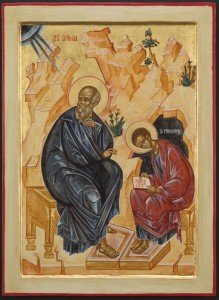 Hopefully my thoughts on 1 John has encouraged my readers to pick up their bibles and read that short letter. You will not be disappointed.
Hopefully my thoughts on 1 John has encouraged my readers to pick up their bibles and read that short letter. You will not be disappointed.
Having concluded my comments on 1 John, I would share some thoughts on 2 John.
Unlike 1 John, 2 John has the characteristics of a typical New Testament letter. It begins by naming the sender, the elder, and recipient, the elect lady and her children. It continues with a greeting and a thanksgiving followed by a brief body and then a closing. It is very short, only thirteen verses. I would recommend my readers to read this.
The body has two themes, both sounded in 1 John as well. The author reminds the recipients not of “a new commandment,” but one they have known “from the beginning”: Let us love one another. Then the author refers to “deceivers” who “do not confess that Jesus Christ has come in the flesh” and then calls them “the antichrist.” These similarities to 1 John are the reason that many scholars think 2 John was written by the same person. There are others who discern subtle differences and conclude that it was written by someone else. In either case, it comes from about the same time period – around 100 CE or slightly later.
Especially interesting is the address in very 1: to the elect lady and her children. In verse 5, the author calls the recipient dear lady. At the end, the author sends greetings from the children of your elect sister. For centuries, it has been taken for granted that elect lady and elect sister refer to Christian communities, just as the church in the New Testament is occasionally referred to as the bride of Christ. This, of course, comes from the Old Testament which refers to Israel as the Bride of God.
The natural meaning of this language in 2 John is that the author is writing to a woman who is the leader of an early Christian community. The closing greeting from the children of your elect sister suggests another Christian community headed by a woman. Thus the letter may provide evidence for women in leadership roles in Johannine communities, consistent with what we see in the genuine letter of Paul.
This second letter, like the others, treats a specific problem. Missionaries who were determined to be heretical, were about to descend upon the community. They denied the reality of the incarnation of Jesus.
